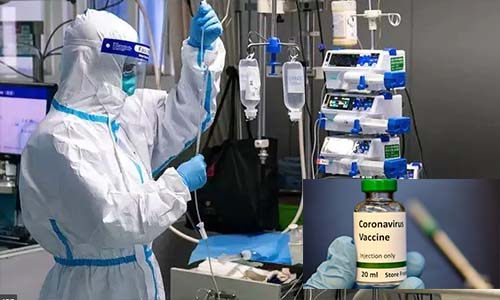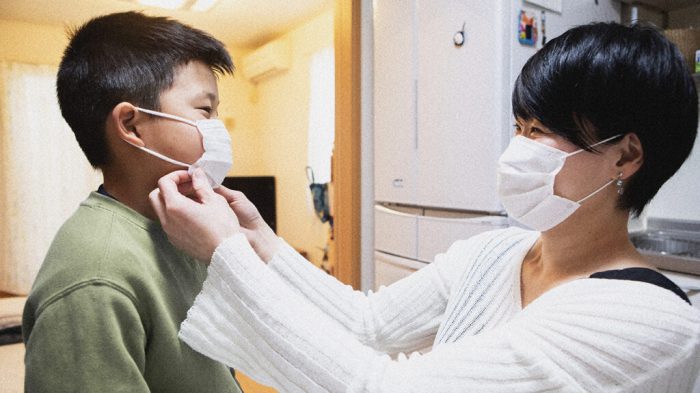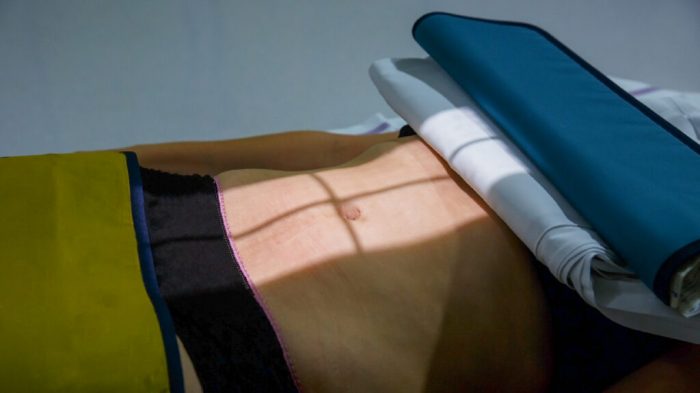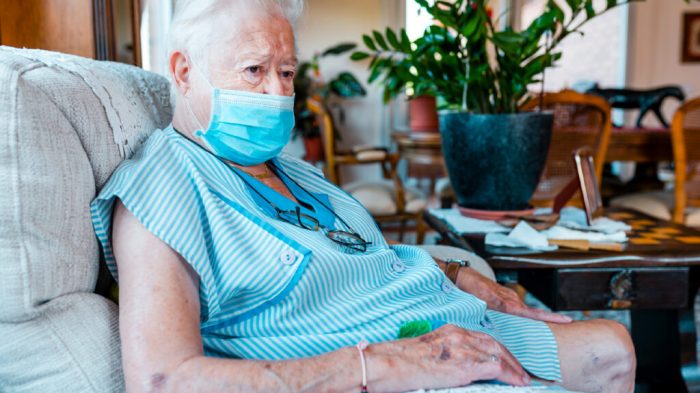With 47 COVID-19 vaccine candidates in testing, it is no wonder that there are myths and misconceptions about when a vaccine will actually be available to the public, and how safe it will be. Pan American Health Organization (PAHO) experts have recently addressed the media to clarify some of these issues.
The latest data from the World Health Organization (WHO) indicate that, as of November 3, 2020, there are 47 COVID-19 vaccine candidates in clinical trial phases around the world. There are also as many as 155 in preclinical testing.
Given the sheer number of vaccine candidates that researchers have developed within months of the start of the pandemic, it is only natural that questions and doubts have arisen about this process.
Traditionally, it can take years for a vaccine candidate to undergo testing for safety and efficacy and to gain official approval for distribution to the public.
However, scientists have been ramping up their efforts with the aim of bringing a COVID-19 vaccine to the public in record time.
At this year’s WIRED Health:Tech conference, Prof. Uğur Şahin, the co-developer of one of the most promising vaccine candidates so far — the “Pfizer vaccine” — explained that speeding up does not mean that scientists are rushing the process.
Rather, researchers have been optimizing the vaccine development process by sharing more data across research teams and conducting some of the tests in parallel, rather than consecutively, Prof. Şahin explained.
Still, many people continue to have questions and doubts regarding the safety and efficacy of future COVID-19 vaccines, as well as the development process for vaccine candidates.
To address some of these questions, specialists affiliated with or collaborating with the PAHO held a dedicated webinar on October 23, 2020.
The speakers included:
- Dr. Cuahtémoc Ruiz-Matuz, chief of the Comprehensive Family Immunization unit at the PAHO
- Dr. Jarbas Barbosa, PAHO assistant director
- Dr. Alba María Ropero Álvarez, PAHO regional advisor on immunization
- Dr. Lucia Helena de Oliveira, PAHO regional advisor on new vaccines
The context of immunization
During the webinar, Dr. Ruiz-Matuz suggested that the issues regarding an upcoming COVID-19 vaccine did not emerge in a vacuum.
For decades, healthcare policymakers have striven to make immunization against common pathogens available worldwide, particularly to prevent potentially dangerous childhood diseases.
Dr. Ruiz-Matuz spoke of the recent situation of worldwide immunization programs, noting that global coverage of vaccines for 1-year-olds is increasing, leading to a lower number of deaths due to preventable illness in infancy.
In the Americas, he said, cases of childhood diseases that countries have been vaccinating against over the past few decades have lowered drastically. This is the case with rubella, diphtheria, pertussis, neonatal tetanus, and measles.
Some diseases, he added, have disappeared altogether — as is the case with polio and congenital rubella syndrome.
However, data from last year indicate that childhood immunization programs may be losing ground. “Of 25 children, three are completely left behind, while one starts the three-dose scheme and does not finish it,” Dr. Ruiz-Matuz pointed out.
Measles, mumps, and rubella vaccinations, in particular, have been on the decline in the past year. According to the PAHO specialist, “This is obviously the impact of the pandemic.”
Dr. Ruiz-Matuz also argued that, sometimes, the challenges that experts face at a local and global level when it comes to immunization are not intrinsic to health services.
Urbanization trends, natural disasters, local political contexts, the lack of social equity, the movement of populations between regions and countries, and country-wide financial crises are all added obstacles standing in the way of adequate vaccination.
Challenges for COVID-19 immunization
Dr. Barbosa noted that once a COVID-19 vaccine is finally available to the public, there will still be many challenges when it comes to distributing it across different populations.
According to him, these challenges include:
- “ensuring equitable, timely, and sufficient access to the vaccine”
- “addressing technical and logistic aspects” regarding vaccine development and production
- “defining the priority groups to receive the first vaccine doses”
- “determining the appropriate number of doses for adequate protection”
Widespread misinformation may further affect people’s trust in the COVID-19 vaccine and prevent them from getting inoculated against the new coronavirus, Dr. Barbosa also warned.
Mistrust in vaccines could also render the population more vulnerable to other preventable diseases, such as pertussis or measles.
Dr. Barbosa urged media representatives to provide information to the public based on hard scientific evidence, and to present it in a very transparent way, in order to fight current trends of misinformation.
Fighting vaccine hesitancy
Dr. de Oliveira spoke of the dangers of vaccine hesitancy, which, she argued, it is possible to reduce by increasing the public’s understanding of what vaccines are and how they work.
“Vaccines prevent diseases that can be dangerous, or even deadly. They greatly reduce the risk of infection by working with the body’s natural defenses to safely develop immunity to disease,” she explained.
“A vaccine is a part of a germ that is exposed to your immune system in a safe way, so that [the immune system] can learn how to fight off that harmful pathogen and protect your body from it in the future when this pathogen enters [the] body.” – Dr. Lucia Helena de Oliveira
The expert went on to cite WHO data that indicate that vaccines prevented at least 10 million deaths in 2010–2015.
She also noted that many fears around vaccines originate from the belief that, in some cases, they may cause rather than prevent infection. This is not true, she emphasized — but to understand why it is not true, it is necessary to have a clear understanding of how vaccines work.
“Vaccines help develop immunity by imitating an infection,” explained Dr. de Oliveira. “Once the imitation infection goes away, the body is left with a supply memory, and this memory will be activated when the germ — the virus or the bacteria, for example — enters […] your body.”
The imitation infection the vaccine triggers may cause minor symptoms similar to those a person might experience during illness, such as a fever. This is normal, the expert noted. It is a sign that the body is working and learning how to fight the pathogen. This is not the illness itself.
However, following vaccination, “it takes a few weeks for the body to produce antibodies” that can identify and help fight the pathogen.
In the meantime, she cautioned, exposure to an active virus just before or just after vaccination may still lead to disease, given that the vaccine has not yet had a chance to do its work.
Developing a COVID-19 vaccine
Vaccine development “is [a] very large and complex [process], often lasting 10–15 years,” Dr. de Oliveira added.
So, what about the fast work on the COVID-19 vaccine? Will it mean that the end result will not be as safe and effective as other vaccines? Not so, said the PAHO expert.
“It doesn’t mean that the vaccine is not going to be safe and [effective], because there are a lot of protocols [at] this moment — protocols from WHO, protocols from FDA [the Food and Drug Administration], protocols from EMA [the European Medicines Agency] — that [have] established rules for this vaccine, which is going to be produced in a much shorter time.”– Dr. Lucia Helena de Oliveira
Finding a safe and effective COVID-19 vaccine will also be possible because many research teams around the globe are looking at both old and new vaccine platforms. These include:
- vaccines using a live virus with reduced infectivity
- vaccines using an inactivated virus
- vaccines using genetic information
- viral vector vaccines
- protein-based vaccines
Moreover, for a vaccine to become licensed for public distribution, it has to successfully pass through three clinical trial phases, Dr. de Oliveira explained.
Phase 1 is a small-scale safety study, phase 2 is an extended safety trial in hundreds of volunteers, and phase 3 is a large-scale trial in thousands of volunteers.
Phase 3 trials test for safety, dosage, and efficacy, as well as possible side effects across various demographics, she noted.
If phase 3 trials are successful, national healthcare decision makers will likely approve the vaccine’s release to the public.
However, the work does not stop there. Dr. de Oliveira said that there is also a phase 4, during which experts distribute the vaccine through immunization programs and the researchers continue to monitor its safety and effectiveness.
Challenges when a vaccine is ready
There are some real challenges ahead once a vaccine is ready and declared safe and effective. The PAHO experts noted that people should not forget these challenges or take them lightly; rather, they should try to understand them for what they are.
Dr. Ropero Álvarez said that the current working scenario is that there will be limited doses of the COVID-19 vaccine available for distribution, meaning that decision makers will have to prioritize their distribution to specific groups.
The WHO co-lead COVAX, which is an international program wherein experts and institutions from 172 countries are collaborating to ensure that a safe, effective COVID-19 vaccine will be available to all.
Dr. Ropero Álvarez cites data that indicate that, to begin with, countries participating in the COVAX program will receive doses that will likely be enough to cover 20% of their population.
Around 3% of doses will likely go to health and social care workers, and around 17% will likely go to high risk adults, such as those with chronic conditions and older adults. It is also possible that some doses may go to additional high priority groups, depending on each country’s situation.
Participating countries will have to conduct very clear communication campaigns, explaining why these groups will take priority in COVID-19 immunization programs, the PAHO expert noted.










